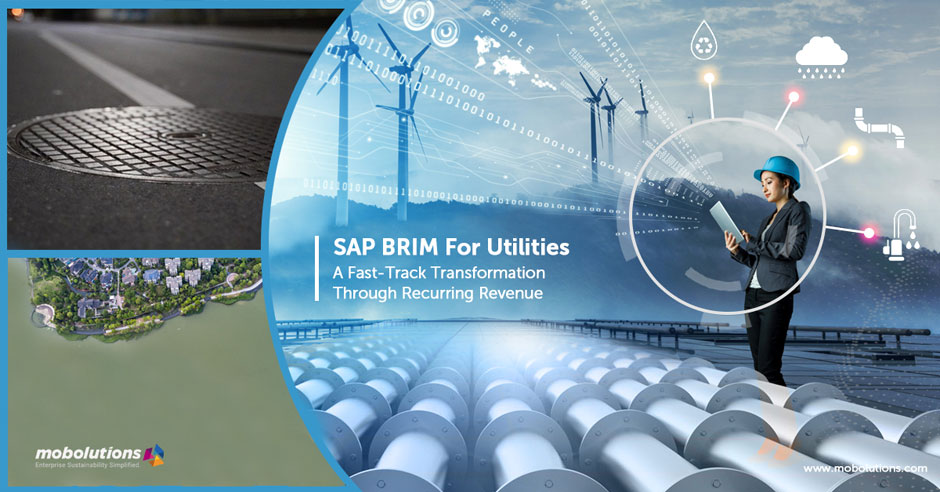The utility business sector is undergoing a radical transformation. As their services diversify every day, the business model for power and utilities is changing. A utility service provider—whether it is electricity, water, sewerage, natural gas—should respond to the rapid changes in consumer preferences while maximizing operational effectiveness.
As in any other business in this digital economy, consumer expectations in the utility sector are increasingly complex, competitive and challenging.
- 92% of the customers expect hyper-relevancy – they want a more personalized experience
- 82% would be willing to buy additional products and services if they were personalized
How can a utility service provider deliver value at speed? To effectively navigate the challenges, transitioning to a recurring business model will deliver enormous value and drive organizations to new frontiers of efficiency.
When the customers consume a commodity product, they enjoy the flexibility of paying only for what they want, with the ability to change their preferences rapidly. Now SAP BRIM transforms utilities from commodity providers to energy service companies by enabling subscription-based business pricing model and simplifying data gathering in metering, billing process, collection, and revenue sharing. Companies can apply different models of calculation for meter usage and ramp-up new revenue streams.
Like any other industries, utilities are concerned about inflation, labor costs, maintenance costs, a lot of overheads. Demand variability, new business model, changing regulatory environment trigger the need for a simplified, standardized, flexible architecture. In order for them to offset some costs, utilities should bring new ways of additional revenue. First, they should think about the type of revenue they are trying to accommodate. How can they offer a service and how can they bill for it? How can it be flexible?
SAP IS-U & SAP BRIM CI—A New Way Of Utilities Billing
To thrive in the new subscription and usage-based economy, utilities need to optimize their existing billing system to increase their billing agility, find optimal recurring revenue benefits, and quickly mobilize their services.
As utilities transform into a subscription-based business, it powers the growth and reorganizes their operations. Traditionally, SAP IS-U is a dynamic solution suite for utilities. It comes packed with functionality for billing, invoicing, accounting. It is a classic solution to bill all the typical divisions and facilitates invoicing functions, account maintenance, credit processing, billing exception, contract account management, etc.
Now leveraging SAP BRIM’s key component of Convergent Invoicing, utilities retail business can effectively confront the business challenges. With SAP S/4HANA 2020, IS-U can integrate with Convergent Invoicing. SAP IS-U generates billable items and this is the most effective way to leverage CI.
Integration Of IS-U With CI
There is an increasing requirement to combine invoicing of commodity and non-commodity products on the same bill. It’s necessary to control the invoicing of different products in a flexible manner so that revenue can be realized soon.
So, the solution includes moving the centerpieces around the various rating and invoicing solutions. The integration simplifies the solution landscape and reduces the overall TCO. The existing components of SAP IS-U—order creation, meter data management (MR, EDM), IS-U billing & invoicing—are integrated with the SAP Convergent Invoicing module.
The clearest outcome is since the SAP BRIM billing solution is designed to rate specific products, the centralized invoicing would reduce the complexity. The best-in-class solution secures revenue, increases customer satisfaction, and reduces churn in the process.

Tangible Business Benefits
- Supports modern business models in the utilities industry that generate significant revenue by selling non-commodity products
- Optimize invoice processing and make it more flexible by combining invoices for commodity products (typical utility products) and non-commodity products in a single invoice. For the utilities retail business requires flexibility to put different items on to a single bill or to create individual bills based on different aspects
- SAP CI, a central invoicing solution, supports the integration of various rating engines. CI can receive billable items or consumption items from different systems from documented stable APIs.
- Reduce revenue leakage by executing billing based on fixed or usage-based rate plans with multiple pricing elements.
In the end, SAP BRIM realigns the business model of utilities by orchestrating the core capabilities of billing, invoicing, and revenue management for energy products. It not only provides new revenue streams but also creates value to the consumers by enabling sophisticated utilities services.
